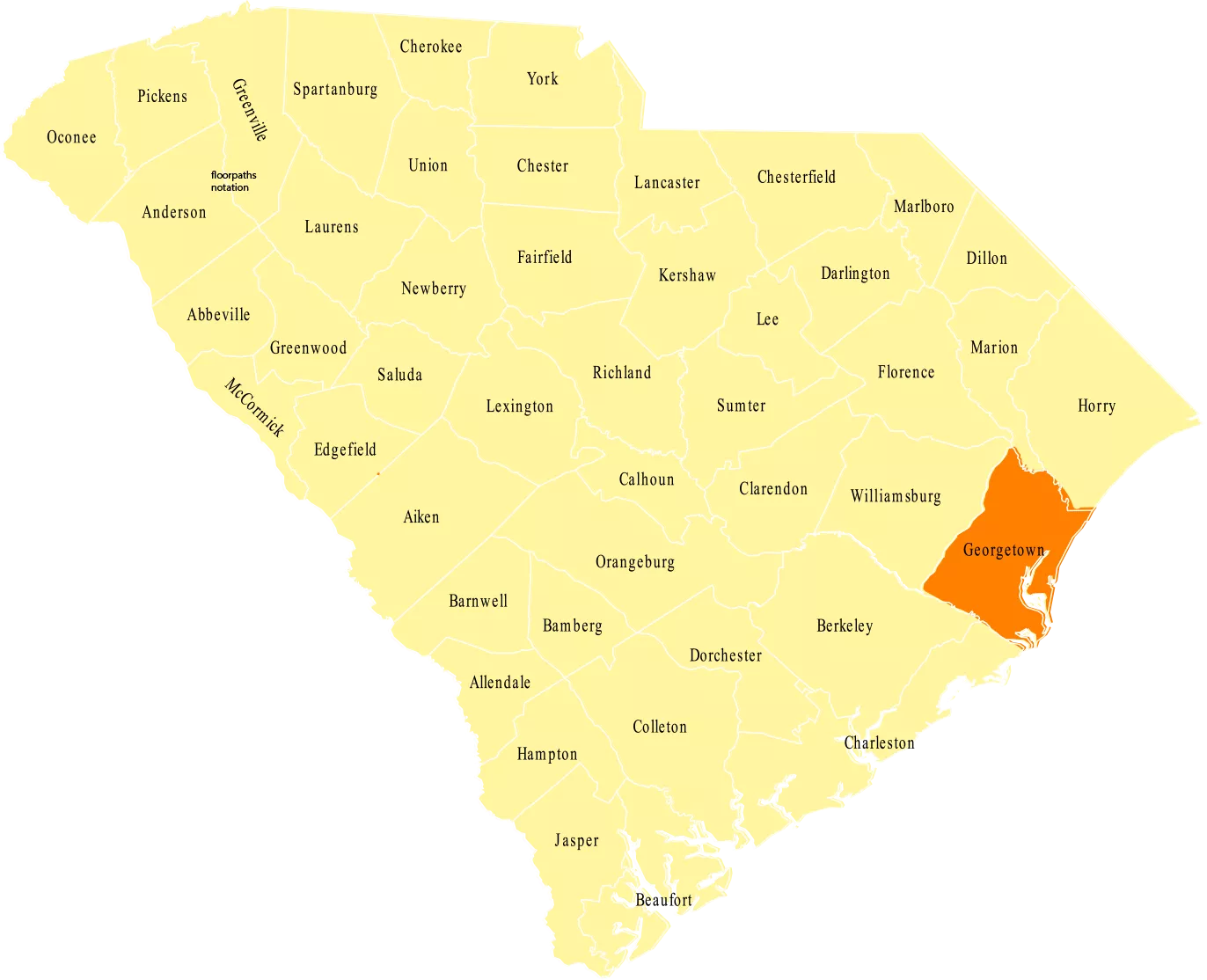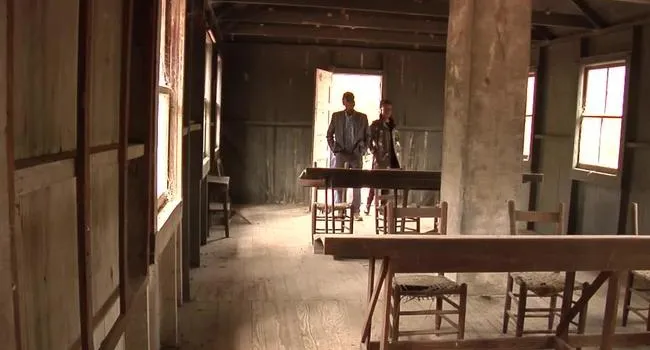
Photo
Born on a plantation on the Waccamaw River, near Georgetown, Washington Allston (1779-1843) attended a preparatory school in Newport, Rhode Island, where he first became interested in art. After...
Although a number of Native American tribes already lived in the area and the Spanish had visited, English planters and their African slaves were the first to settle what is now known as Georgetown County. In 1769 Prince Frederick, All Saints, and Prince George parishes were combined, resulting in Georgetown District. In 1785 the district split into four counties including Winyah County. Winyah County would later be renamed Georgetown County in honor of King George II. Despite the approval of the British that this name suggests, Francis Marion regularly engaged in guerilla warfare from the county’s marshes during the Revolutionary War.
A coastal location has always served as a large source of wealth for Georgetown County. The location favored the growth of plantation crops, especially cotton and Indigo. In fact, Indigo planters became so affluent that they became their own level of high society known formally as the “Winyah Indigo Society.” Later, rice took over and became the crop of choice for Georgetown County plantation owners, but Indigo plants still grow wild in the area. Furthermore, the Georgetown Port, in the county seat of Georgetown, became such a source of income that pirates plagued the county’s coast.
Today one can easily observe a connection between Georgetown County’s past and its future. The African slaves brought over by British planters to farm cotton, Indigo, and rice have preserved the Gullah culture throughout the generations. This culture is especially evident on Sandy Island. Georgetown’s port still anchors the county’s economy. The county’s historical significance, coastal location, beach towns, and nature preserves make it a popular tourism destination.
Georgetown County, A Brief History. Accessed June 03, 2016.
http://www.georgetowncountysc.org/about/history.html

Photo
Born on a plantation on the Waccamaw River, near Georgetown, Washington Allston (1779-1843) attended a preparatory school in Newport, Rhode Island, where he first became interested in art. After...
Video
In the early years of the twentieth century, a number of prominent, wealthy Northerners purchased land on the Waccamaw Neck. Bernard Baruch, who bought Hobcaw Barony in 1905 as a winter vacation home...
Video
In 1956 Bernard Baruch signed over all of Hobcaw Barony to his daughter, Belle. Belle died in 1964, leaving Hobcaw "for the purpose of teaching and/or research in forestry, marine biology, and the...
Video
Culinary adaptations transformed traditional African dishes into a unique, new creolized cuisine, influenced by European and Native American traditions, and characteristic of Gullah culture. Foodways...
Photo
This is the Georgetown section of a map of South Carolina, published by the noted mapmaker Henry Mouzon in 1783. From the Kendall Collection. Courtesy of the South Caroliniana Library.
Photo
Brookgreen Gardens, between Myrtle Beach and Georgetown on the coast of South Carolina, was formed when Archer M. Huntington joined together parts of four different rice plantations. Anna Hyatt...
Video
The southeastern coast of the United States is dotted with many barrier islands -- long narrow strips of land that protect the salt marsh behind them and the land itself. In South Carolina, one of...
Video
Strawberry Schoolhouse was a private school for African–American children who lived at Hobcaw Barony, built for them by Bernard Baruch in 1915. This was a one room schoolhouse with one teacher for...
Video
Hobcaw Barony, known to Native Americans as “Between the Waters,” has a rich past. Although Hobcaw is best known for the Baruch family and their many wealthy and well-known visitors, the 20th century...
Video
Joshua Shubrick was a former resident of Friendfield Village. He split his time between Georgetown, where he cared for his mother, and Hobcaw, where he went to Strawberry School. Shubrick stayed with...